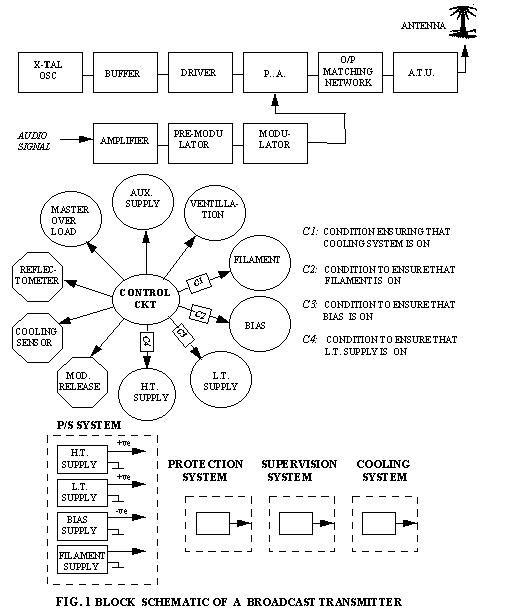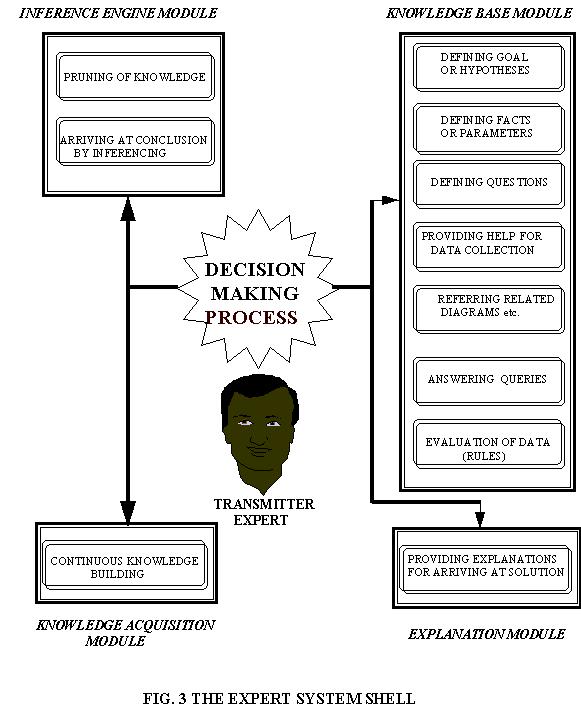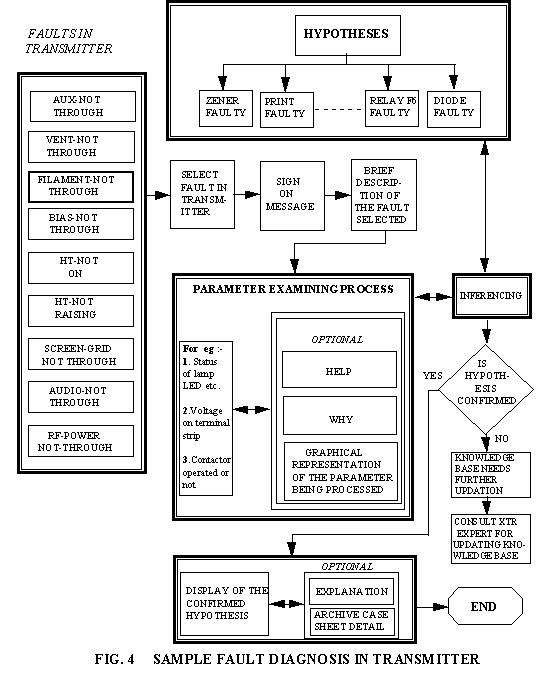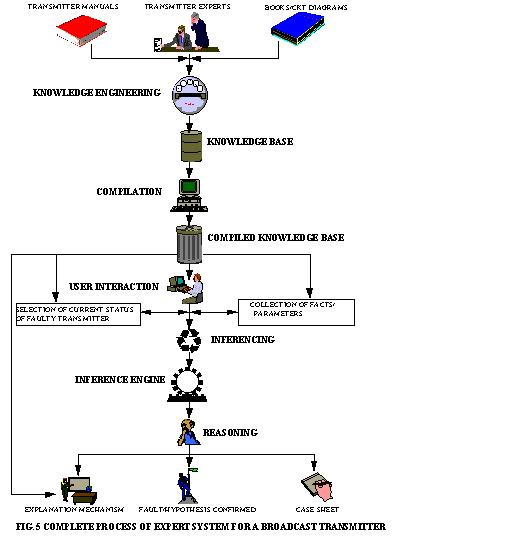| S.No |
Name of Complaint |
No. of ParametersExamined |
Name of Hypothesis confirmed |
Time Taken (in Mins) |
Remarks |
| 1. |
Filament NOT Through |
6 |
Door contact faulty or Door Open |
4 |
Actually contact of K-11 faulty. Change in KB required |
| 2. |
Bias Not Though |
7 |
Thyristor Control interlock switches open |
6 |
In A-89 unit GH402, NU300, KT 401, F11, F12, F13 K1, K2 K3, contacts are in series. Actually switches NV 300 was tripped |
| 3. |
Bias Not Through |
8 |
Crow Bar Relay K303 operated |
5 |
Contact of K303 was found open |
| 4. |
HT Not Through |
9 |
Relay K-22 Faulty |
|
Actually Relay K22 was not energised due to loose contact. |
| 5. |
Screen Grid Not Through |
3 |
Contact of K15 faulty |
3 |
Actually relay K16 was faulty. Contacts of K-15 & K-16 are in series. Correction in KB incorporated. |
| 6. |
Vent Not Through |
6 |
FS switch Tripped |
4 |
Actually veritron fan was not working FSI, FUI, F11 are in series in Varitron control ckt. to be incorporated |
| 7. |
Filament Not Through |
10 |
FS41-48 tripped |
5 |
Actually FS-47 was found tripped |
| 8. |
Vent Not Through |
6 |
HP Air flow switch faulty |
4 |
K-132, Air flow switch faulty |
| 9. |
Aux Not Through |
8 |
FS61-67 & 72 in B. Mod tripped |
6 |
FS-63 was found tripped |
| 10. |
BIAS Not Through |
7 |
Change over switch faulty |
6 |
S-70 was faulty |
| 11. |
Aux Not Through |
5 |
Relay K201 or Battery supply faulty |
5 |
K-201 was faulty |
| 12. |
BIAS Not Through |
7 |
KM62, FS64, FS65, FS66, FS26 tripped |
4 |
FS64 was tripped |
| 13. |
BIAS Not Through |
7 |
A-89 control switches tripped |
4 |
KT401 was found tripped |
| 14. |
Audio Not Through |
4 |
Input Att. YAC07 in M-Rack faulty |
3 |
|




